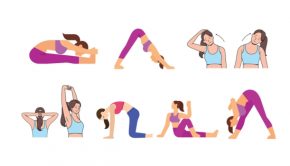Interval Training Knocks Down Blood Sugar
Exercise Bursts Prove Fast and Effective
Labels may vary, but results are what count. Whether called high-intensity intermittent exercise (HIIE), interval or burst-style training, recent research proves that this form of exercise improves insulin levels. This is promising news for the estimated 50 million American adults who have abdominal obesity and are on the path toward metabolic dysfunction due to a high-sugar diet that causes spikes and crashes in blood sugar levels and eventually contributes to insulin resistance.
According to a recent study published in the Journal of Obesity, the benefits of doing HIIE at least three times a week for two to six weeks include reduction of abdominal body fat, improved aerobic and anaerobic fitness and lower levels of insulin resistance.
In a separate study, Norwegian researchers examined the impact that different types of exercise programs had on individuals seeking to reverse metabolic dysfunction, an overall chemical imbalance largely attributed to insulin resistance. They concluded that despite producing similar effects on body weight and blood pressure, the aerobic interval training group also showed greater improvement in insulin sensitivity, aerobic capacity and high-density lipoprotein (HDL, or “good” cholesterol) than those performing continuous moderate exercise. They also exhibited lower blood glucose (sugar) levels.
Another beneficial HIIE characteristic is that it involves markedly fewer exercise repetitions and less training time. JJ Virgin, a fitness and nutrition expert and author of The Virgin Diet, recommends incorporating burst-style and resistance training for fast, lasting fat loss and improving insulin resistance. Best of all, you can do these exercises in minutes a day.
“Burst exercise means working out in short intense bursts of 30 to 60 seconds, coupled with one to two minutes of active recovery time, moving at a lower intensity that allows you to catch your breath and lower your heart rate,” she explains.
Two easy examples of this are sprinting to burst and then walking to recover, and running up stairs to burst, and then walking down them to recover. “This should be repeated for a total of four to eight minutes of high-intensity bursts per session. Overall, this will take 20 to 30 minutes,” says Virgin.
She notes that the increase in stress hormones that occurs during HIIE are counteracted by the simultaneously raised levels of anabolic-building hormones. “Short bursts train the body in how to handle stress and recover. Repeated intense bursts raise lactic acid level, which in turn raises growth hormone production and supports fat burning. The research is clear that the more intense the exercise, the bigger is the metabolic benefit afterward.”
The Skinny on Glycemic Foods
by Kathleen Barnes
Those wanting to reduce carbohydrate intake by eating foods with a low glycemic index based on their impact on blood sugar levels might consider using newer tables that instead measure glycemic load, suggests New York City Registered Dietitian and Nutritionist Susan Weiner.
She explains that the glycemic index only considers how quickly sugars from food are released into the bloodstream. The glycemic load charts a more accurate accounting of the amount of carbohydrates in an actual serving,rather thanthe 50-gram (1.76-ounce) portion used in calculating a food’s ranking on the glycemic index scale of 1 to 100.
“Glycemic load is a better indicator of how a carbohydrate food will affect blood sugar in realistic portions, especially in combination with other foods, including proteins and fats,” advises Weiner.
Here are a few compelling comparisons:
Food Glycemic Index Glycemic Load
Carrot 35 (low) 2 (low)
Watermelon 72 (high) 4 (low)
Graham crackers 74 (high) 8 (low)
Baguette 95 (very high) 15 (medium)
Potato 98 (very high) 18 (medium high)
Snickers bar 51 (medium) 18 (medium high)
Cornflakes 93 (very high) 23 (high)
For an expanded rating of food items, visit Tinyurl.com/Glycemic-Load-Factor.





























